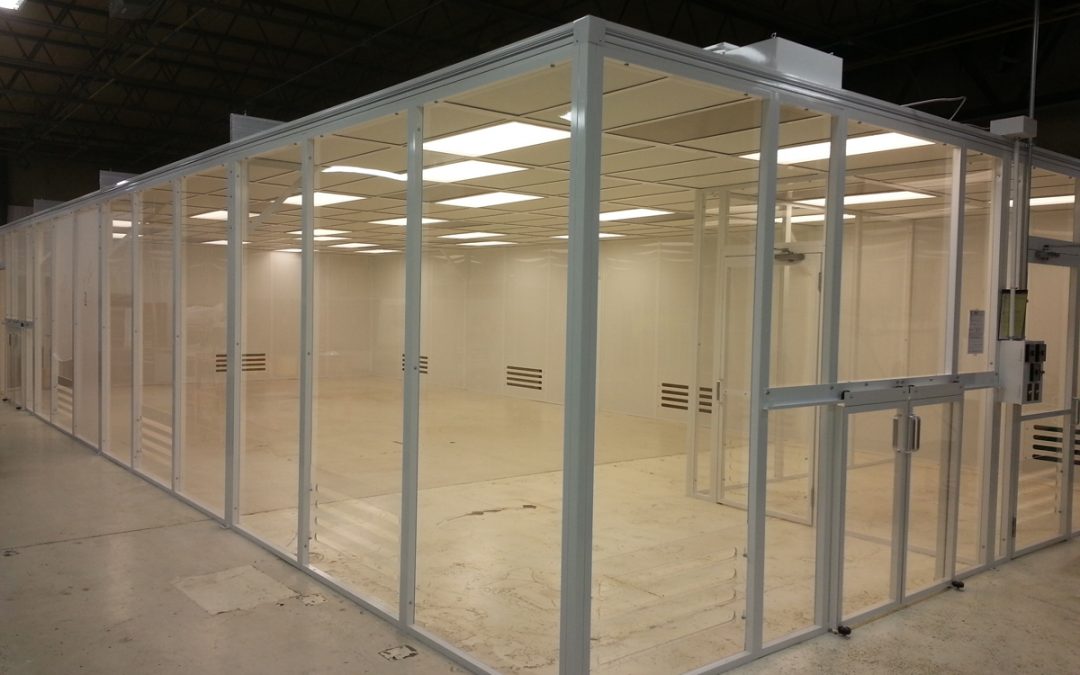Cleanrooms can be expensive, there’s no doubt about it. A cleanroom is a highly technical system that has to be maintained to exact standards, and that maintenance can certainly be expensive. But since you can’t afford to not have a clean room, what are some steps you can take to make the costs a bit more manageable? To be the most efficient, it’s best to start thinking about your costs while you’re still in the planning phase of your cleanroom. Don’t worry if your cleanroom has already been built, because there are plenty of steps you can take to reduce your costs in an existing system as well.
Here are our top suggestions to help you cut your cleanroom system costs, starting with construction, and ending with supply purchasing:
Have a plan: The best thing you can do when installing a cleanroom that stays under budget is to have a strict, defined plan. Make sure you know exactly what’s happening, when it’s happening, and how it’s happening. If you’re building a brick and mortar cleanroom, know how long construction will take, and how long until you’ll be able to start your production. If you’re going with a modular cleanroom, installation shouldn’t be much of an issue, but you should know approximately how long it will take you to get it inspected before you can move in and get started. If you have a construction plan and stick to it, you’re less likely to have any surprises budget-wise.
Size: The size of your cleanroom will have the biggest effect on your budget. The bigger the cleanroom, the more air, filters, and equipment in general it will take to run to standard. That’s why it’s important to know exactly how much space you’ll need. Of course, your cleanroom needs to be comfortably large enough to house your operations, but it’s a good idea to check, and double check exactly how much space you’ll need, so that you don’t end up buying equipment for dead space.
HVAC system: A great way to save money on your cleanroom is to make use of your existing HVAC system. While you’ll have to talk to your contractor about its capabilities, if you can use your existing air for your cleanroom, you’ll save a lot on installation and overall energy costs. Do remember that if you plan on expanding your cleanroom operation over time, you’ll have to make sure your existing HVAC system will be able to support the increased load. Otherwise you’ll have to consider a costly remodel when you do decide to expand.
Pass-through chamber: Not only does this one save money, it’ll save your employees time as well. A pass-through chamber means fewer employees will have to gown to transfer materials and supplies in and out of the cleanroom, which first saves you money on expensive gowning supplies. In addition to that, the more employees in your cleanroom, the more contaminants, and the more times a door opens, the harder your cleanroom will have to work to restore proper air pressure. A pass-through chamber is considerably smaller than a door, and by design prevents your cleanroom from losing much pressure. Not only will a pass-through save your employees time, but your cleanroom will stay cleaner, and will be able to maintain pressure more easily, saving you money on energy costs.
Economical lighting options: Cleanrooms have to be well-lit. People are doing very technical work, sometimes on the tiniest parts. Good lighting does cost money, but you can certainly cut those costs by investing in energy efficient lighting that still suits your cleanroom. One option is installing LED panels. LED lights give off less heat, which reduces your energy cost, and they last five to eight times longer than regular fluorescent bulbs. If you’re worried about lighting panels interfering with laminar air flow, you might also consider LED strips, which are attached directly to the ceiling grid, in between filters so no air flow is interrupted. Since these lights give off less heat and last longer, you’ll save a lot on energy costs in no time.
Prefilters: If you were thinking that pre-filters were an unnecessary cost that would just add to your budget, think again! Prefilters are actually relatively inexpensive compared to HEPA and ULPA filters, and they really cut down on particulate. Since they are placed before HEPA and ULPA filters, they filter out a lot of primary contamination, and can prolong the life of those more expensive units. Though they do have to be replaced more often, you’ll save money in the long run by not having to replace the expensive HEPA/ULPA filters as much.
Training: The absolute best way to cut down on costs is to make sure that everyone that enters your cleanroom knows exactly what’s expected of them, what protocol is, and how the cleanroom needs to be treated. When everyone understands the process, knows how to gown properly, and how to keep the cleanroom clean, it will be much easier and less costly to keep your clean room running properly.
Buy in bulk: A final cost-cutting tip is to buy in bulk. While you may have already thought of it, distributers are coming out with new options all the time, so it’s a good idea to stay up on all the new products available. Any consumable good that your facility uses regularly can generally be bought in bulk, which is a lot cheaper for you, and much more convenient for your employees, as they’re less likely to run out of items that are important to your clean room’s cleanliness.
With more than 20 years experience in designing, installing, repairing and supplying cleanrooms, Angstrom is your first choice for any clean room question. We can design a cleanroom to your exact specifications, and we’re more than willing to make repairs as well. Give us a call at 888-768-6900 or contact us online today!


